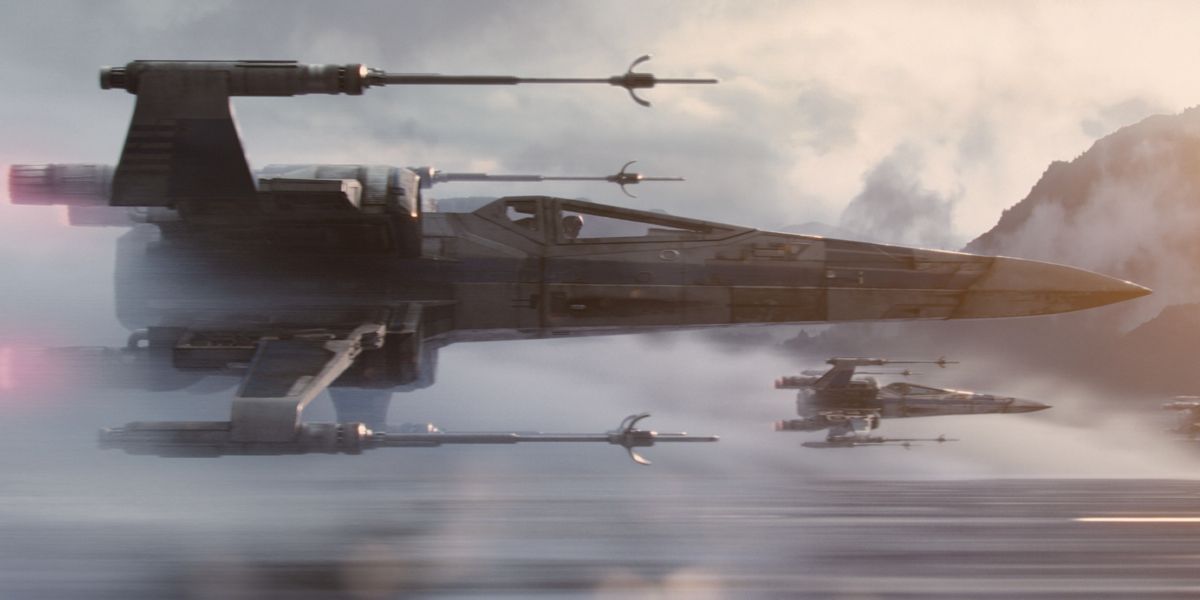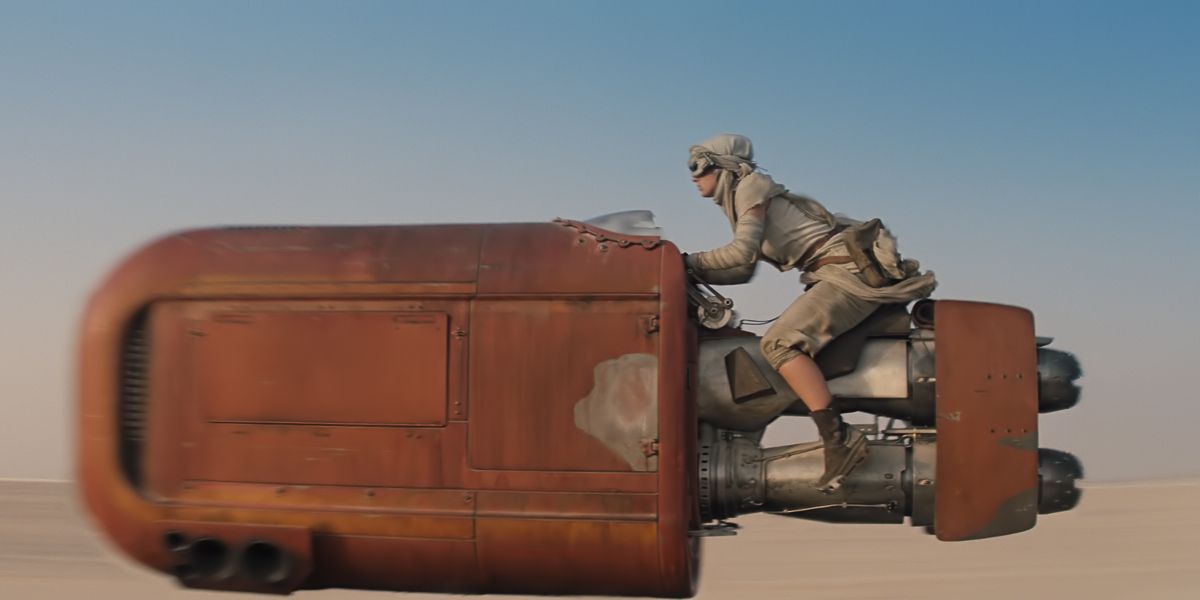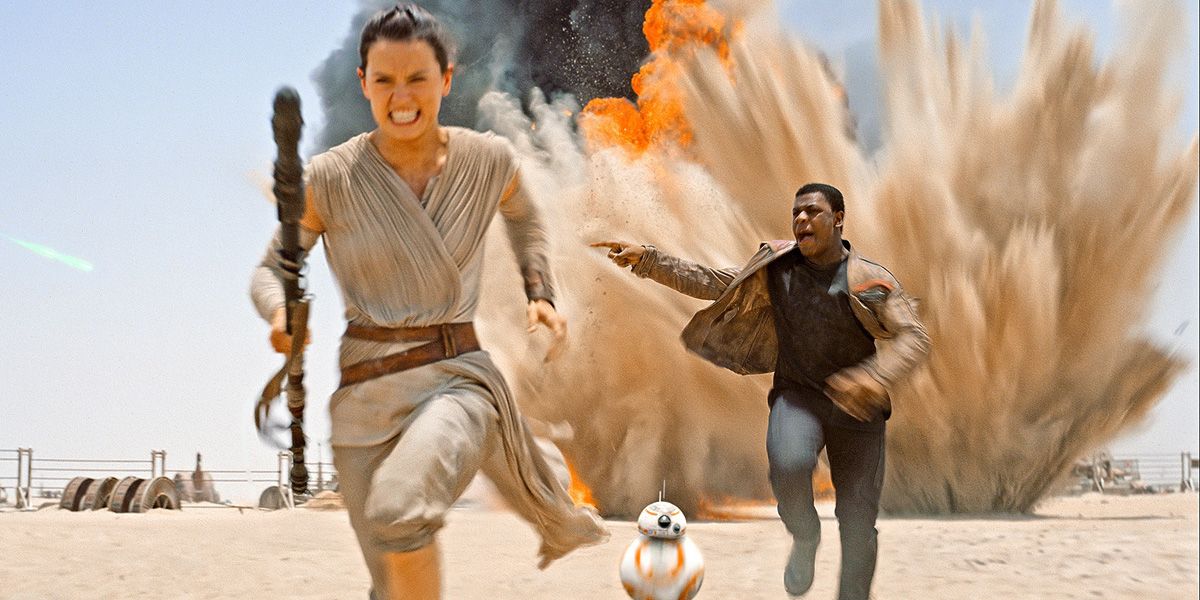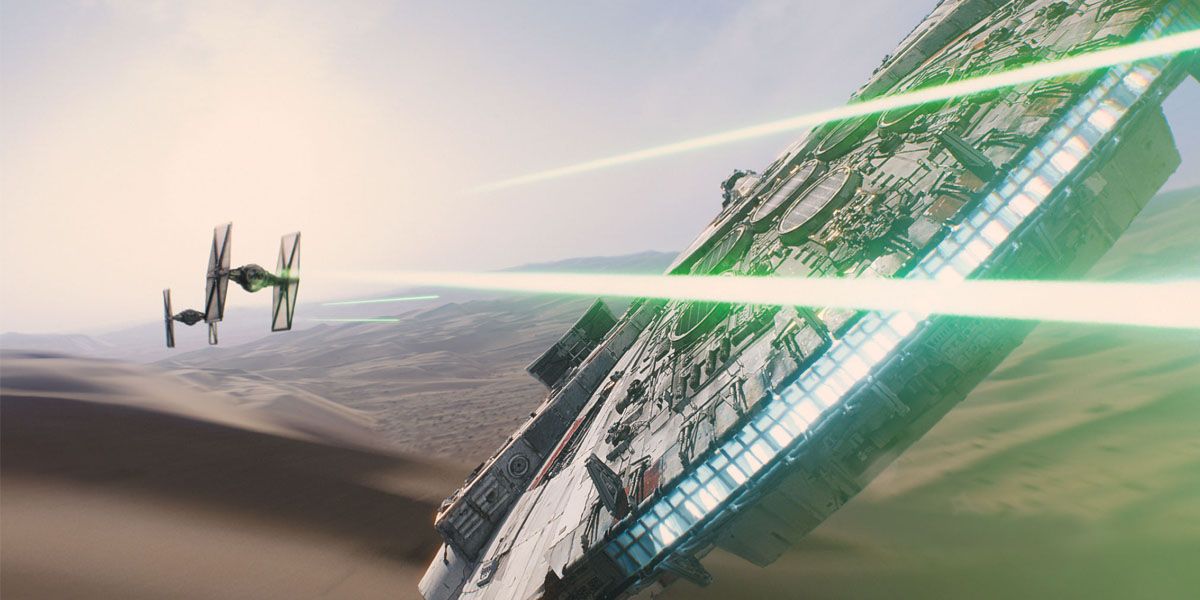Many movie fans see the original Star Wars film as ground zero for modern visual effects in Hollywood. George Lucas' team attempted - and pulled off - incredible things that had never been tried before, delivering spectacle that was the first of its kind. Ever since that watershed moment in 1977, Hollywood has never been the same, and the audience expectations for what a blockbuster should look like were raised to astronomical heights.
Nearly four decades later, the galaxy far, far away is back on the big screen, and visual effects teams are still trying to push the boundaries of what's possible. It was heavily publicized in the lead up to Star Wars: Episode VII - The Force Awakens that director J.J. Abrams would be leaning on practical effects to bring the universe to life, blending the old school techniques with modern technology. If the movie was going to capture the magic of the original trilogy, successfully blending the two styles would be extremely important.
Screen Rant recently talked to The Force Awakens special effects supervisor Chris Corbould and creature shop head Neal Scanlan about how they combined practical effects with CGI, if future Star Wars movies will use that same aesthetic, and the challenges of pulling off some of Star Wars 7's most memorable sequences.
A lot was made about J.J. taking Star Wars back to its roots with practical effects and real locations, but obviously with a movie like this, CGI plays a large role as well. So how important was it for you guys to find the proper balance between practical and digital?
Corbould: A lot of the time, there’s a very huge demarcation, as far as once you’re in space, that’s obviously all digital. Where we strived to get the practical element is in the desert where we were doing explosions, Rey’s speeder. But to be quite honest, there’s a great marriage now between the departments, mine, Neal’s and the digital people. For instance, Rey’s speeder, we fabricated a bespoke shanty and mounted it with a 1,000 cc motorcycle engine, and there was a hidden driver within the body of her speeder. So we could drive through the desert at 60 or 70 miles per hour with Rey on the back of it. Then the digital guys took over and painted out all of our mechanics and then put in dust clouds and things like that. We strive to do as much as we can practically, wherever we can, as J.J. really wanted to do, but there’s still a massive marriage between the three departments.
Scanlan: From a creature perspective, there was a time where we go back a few years now, before digital technology became so incredible, that I think animatronics and creatures had probably reached a point where we exhausted possibilities. But as soon as the digital revolution hit us, and this is where we are with ILM, it opened up a whole new world. So, as Chris was saying, the same thing with the speeder could be applied to the creatures. I think the mantra from J.J. was, if we can shoot it real, we must shoot it real. And I think what was interesting is, some time ago, if that meant real, it meant you had to do it all in camera. Now, you don’t have to do it all in camera. What you can do is you can achieve as much as possible in camera. If you want to have a rod on something, if you want to see somebody’s feet, or if you have a person on the outside as in the case of BB-8, it’s not an issue anymore. Those things can be dealt with in post-production. And it just opens up tremendous avenues for everybody’s craft.
Would you guys say that The Force Awakens sets the template for how visual effects are going to be handled in upcoming Star Wars movies? Meaning, will the future films place an emphasis on practical effects like Episode VII did, or will it depend on the director?
Corbould: Working with Rian [Johnson, director of Episode VIII], he’s very, very keen on the practical side of it. J.J. has done an absolutely astounding job reintroducing Star Wars to the existing fan base and introducing it to a new fan base. From there, on the next two episodes, everybody’s familiar with it again. We can really explore the whole universe side of it and come up with some really spectacular stuff, all within the vein of doing as much as we can practically. Personally, it’s something that I get a lot of excitement and satisfaction out of. I like to see my crew stretch to the limits. And I think if you can get the real practical elements in there, combined with what the digital guys can do to punch stuff up and touch it up a little bit, I think it pays big dividends when you see it on screen.
Scanlan: When we started on the project, there is a language, there is a vocabulary, there’s a world that George [Lucas] created. It’s a unique world that George created. It’s what makes Star Wars what Star Wars is. In many ways, in order to remain respectful to that, in order to be able to take it forward, Chris has worked on nearly all the James Bond films for many years, and there’s a certain feel to a James Bond film and if you step outside of that, it’s not James Bond. I would say that was true of Star Wars. And in order to push ahead and keep the films in their own unique genre, I think we have to hold on to it. I think that’s a desire from everyone from Kathleen Kennedy downwards to try to achieve as much practically, to try to hold on to that real, tangible world that makes us feel like we know this environment in some way. And then to use the brilliant digital work to push us forward to somewhere we haven’t been yet.
Which sequence from The Force Awakens was the most challenging to complete and why?
Corbould: From my perspective, the desert sequence was very challenging for many reasons; the logistics of getting all the crew and materials out there, the speeders that we had to fabricate to work in the heat. And the logistics of going out and getting the permissions to do it. Abu Dhabi is a great place, but having said that, we were in a position where there wasn’t a building for 30 miles. So when we did all the big explosions, we didn’t have to worry about breaking windows in local office blocks or neighbors complaining. We were really allowed to show what we could do in our craft. I was really keen to make sure that Daisy [Ridley] and John [Boyega] were involved in it all. You have to do lots, and lots, and lots of tests, so we did tests of the explosions, which could be our big field explosions or big sand explosions. We did lots of tests ourselves where I would stand next to them and then we introduce Daisy and John to them, and they were running through. So when they were going to do the shot, they were totally confident and they could concentrate on their acting, and we got some great shots of them. Especially the one where they were running towards the space ship that blew up; the explosions, getting everyone close and behind them, that was a real fun little shot, that one.
Scanlan: I stand with Chris on the Abu Dhabi shoot because of the heat and some of the characters that we took there. The large beast at the watering hole with Finn is a physical effect with five performers inside it who had to deal with the weight and the physical exertion. So, it was demanding because of its environment. But I think for us, the day-to-day sustaining of BB-8 and developing BB-8’s character and finding versions of BB-8 that we could use to solve particular set-ups practically was the big challenge of the film. And the one other thing I’d like to add to that is Chewbacca because I’d like to pay respect to the original Chewbacca suit. It was actually one of the more challenging things we did on the film because to replicate that suit in a faithful way, we were humbled by how clever Stuart Freeborn was and how clever they were on the original film. So it’s interesting that some of the things that don’t seem the most challenging actually surprised us. We had to work very, very hard to get Chewie the way we wanted it to be.
Finally, I know you guys can’t reveal too much about Episode VIII right now, but looking ahead to that film, is there anything that you guys are looking forward to doing that you were not able in The Force Awakens?
Corbould: It’s a whole new story with some of the elements of Episode VII. It’s a new, exciting director. Obviously, we can’t talk about the script, but we’re raring to get going on it because it’s going to be a great next step in the next trilogy.
Scanlan: We have a slight problem in that we set a standard, and people very quickly become used to that standard. We’ve just come through from Rogue One and when we start to move in Episode VIII, you have to push forward and you have to develop and you have to challenge the practical effects. You can’t stand still, and hopefully the audience will see that there is an evolution throughout any film that comes out from now. None of us intend to stand still and hopefully keep pushing on and making the new Star Wars as technically innovative as the originals were.
Corbould: It’s a little bit of the same situation we have on the Bonds. You can’t rest on your laurels and the success of the previous film, you have to chuck all your thoughts out the window about the previous film and start coming up with new ideas that are going to be faithful but more spectacular. You have to keep upping the bar all the time.
Sounds great. I’m looking forward to seeing what you guys come up with for the next one.
Corbould & Scanlan: Thank you.
Thank you for your time.
Corbould and Scanlan: Pleasure. Cheers!
NEXT: Future Star Wars Movies Will Emphasize Practical Effects
Star Wars: Episode 7 – The Force Awakens is now in theaters, followed by Rogue One: A Star Wars Story on December 16th, 2016, Star Wars: Episode 8 on May 26th, 2017, and the Han Solo Star Wars Anthology film on May 25th, 2018. Star Wars: Episode 9 is expected to reach theaters in 2019, followed by the third Star Wars Anthology film in 2020.




